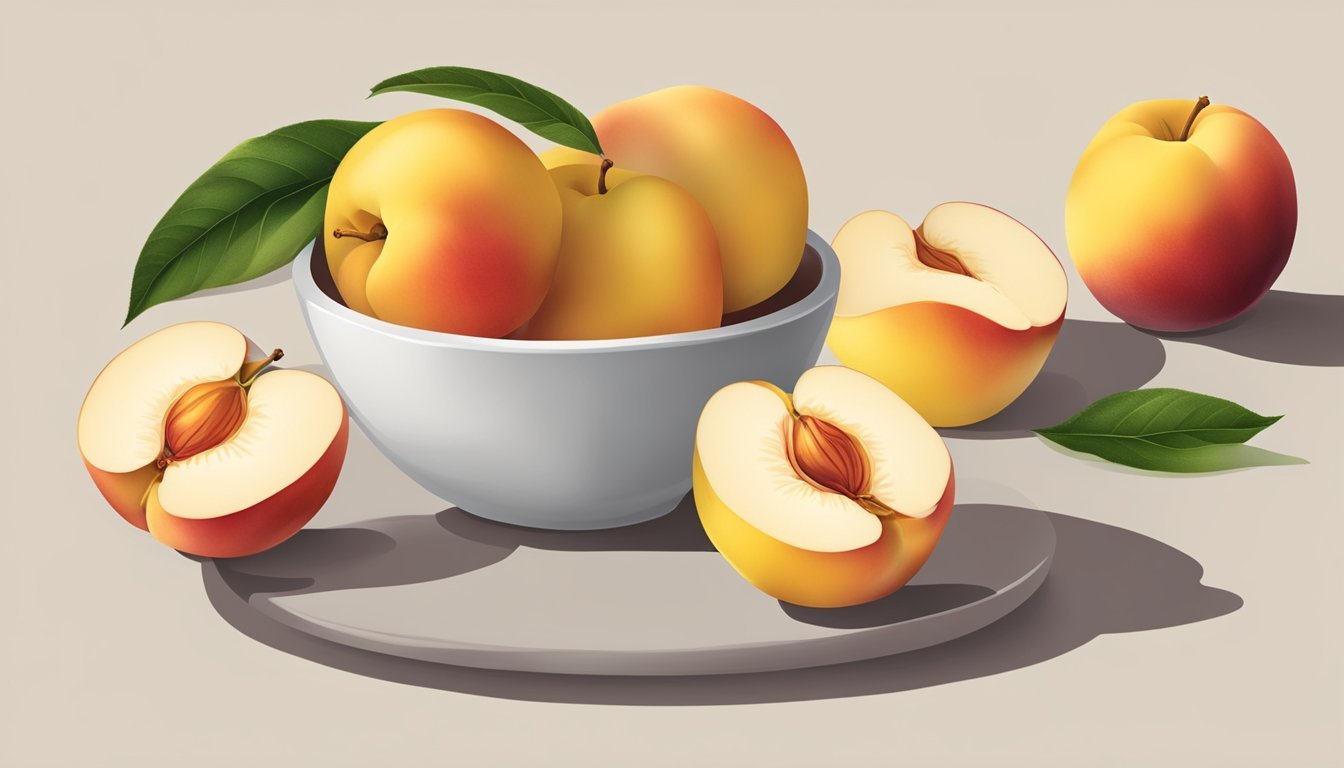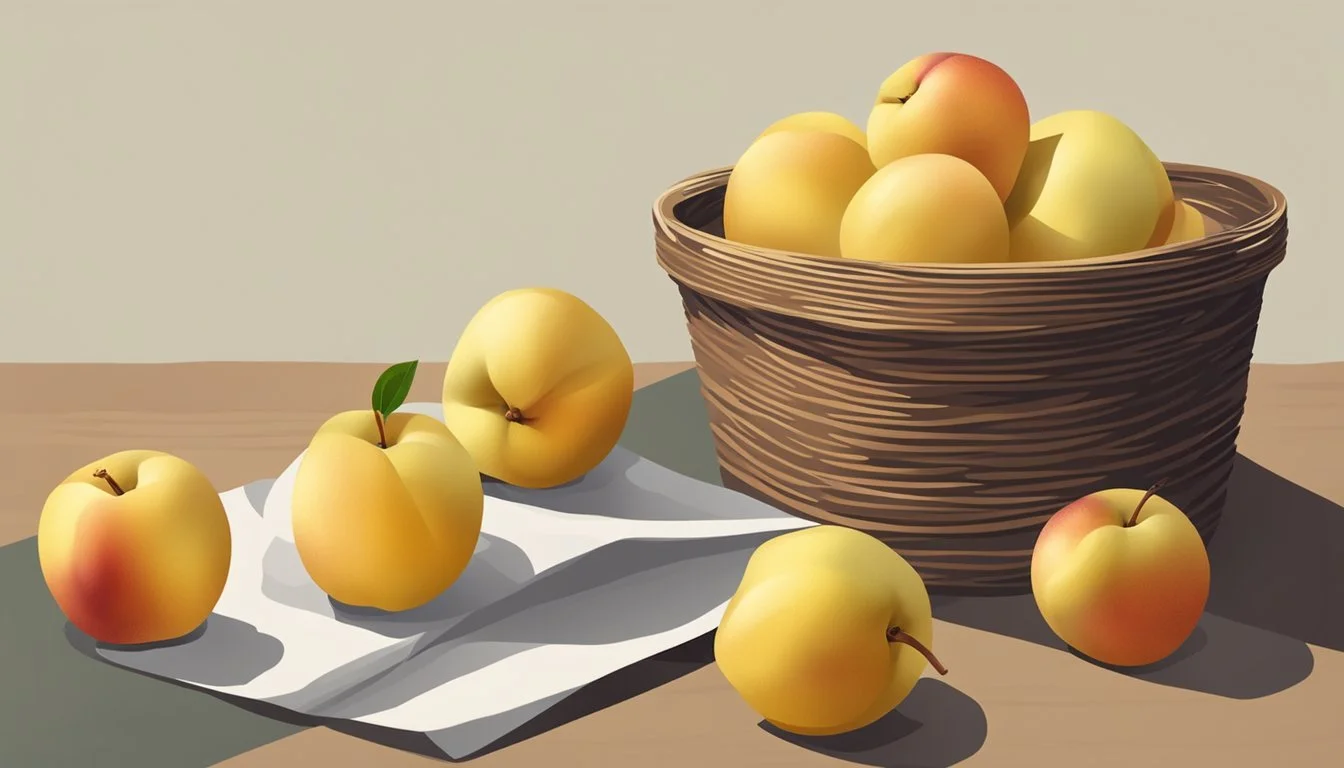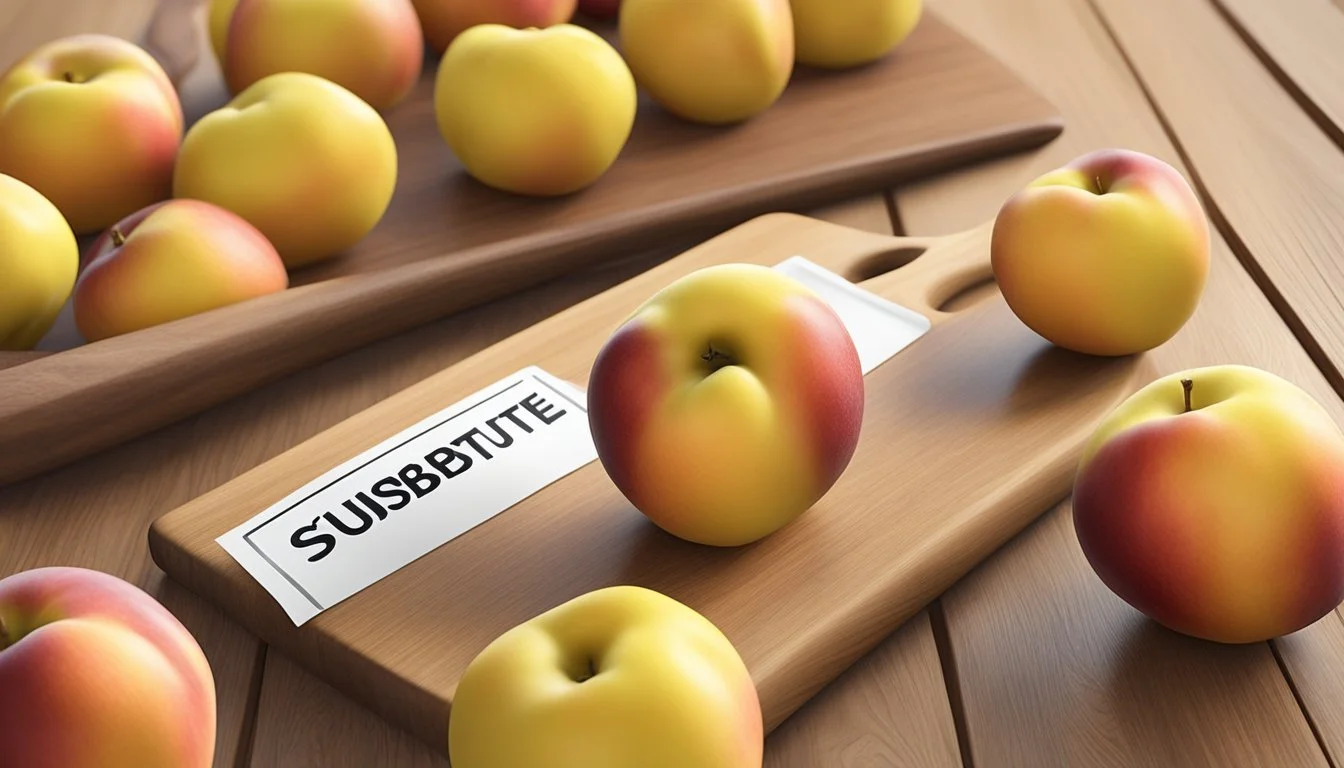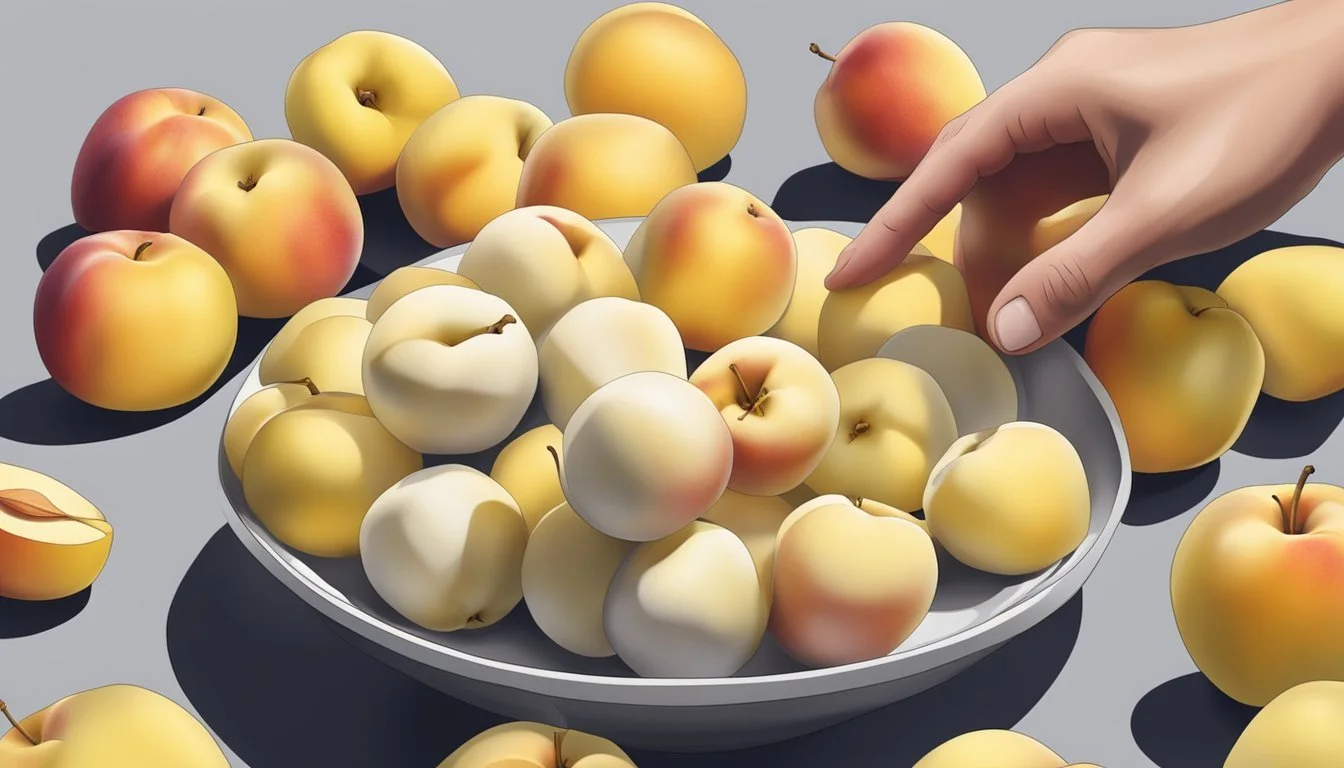How to Substitute White Nectarines for Yellow Nectarines
A Simple Guide
White nectarines, with their sweet taste and juicy texture, have become a popular fruit in various culinary applications, from desserts to salads. However, there might be occasions when a recipe specifically calls for yellow nectarines. Substituting white nectarines for their yellow counterparts is straightforward because they are similar in flavor profile and texture. The primary difference lies in the subtle taste variations, with white nectarines often being sweeter and less acidic than yellow nectarines.
When replacing yellow nectarines with white ones, cooks should consider the sweetness of the white variety and adjust the recipe's sugar content if necessary. Since white nectarines tend to have a firmer texture upon ripening, they can be a preferable option in recipes that require the fruit to maintain its shape during cooking. It's also essential to keep in mind that the presentation of the dish may change, as the creamy, pale flesh of white nectarines provides a different visual appeal compared to the deeper hues of yellow nectarines.
Understanding Nectarines
In the realm of stone fruits, nectarines stand out for their smooth skin and sweet taste. Here, we explore the origins and types of nectarines and dive into their nutritional benefits, particularly highlighting how these qualities might change when substituting white for yellow varieties.
Origins and Varieties
Nectarines hail from the same family as peaches, and botanists consider them a variant of the peach that is bred for its lack of fuzz. There are two main types of nectarines based on the color of their flesh—white and yellow. White nectarines, such as the White Diamond variety, tend to be sweeter and less acidic, whereas yellow nectarines, such as Suncrest, offer a classic, strong nectarine flavor. A pale green or yellowish-green variant, named the Honeydew nectarine, also exists, though less common.
Type Flesh Color Taste Profile White Diamond White Sweet, juicy, less acidic Suncrest Yellow Classic nectarine flavor, balanced Honeydew Pale Green Mild, reminiscent of melons
Nutrition and Health Benefits
Regardless of color, nectarines are a nutritious choice and deliver a range of health benefits. A medium-sized nectarine contains vital nutrients including potassium, vitamins C and A, and dietary fiber. Specifically, a white nectarine provides about 64 calories, 15 grams of carbohydrates, 1 gram of protein, and 2 grams of fiber. They're also a healthy source of vitamins and minerals, contributing 15% of the Recommended Daily Allowance (RDA) of Vitamin C and 1% of Vitamin A. Their nutrient profile supports a healthy diet and can aid in maintaining good digestion, skin health, and immune function.
Calories: ~64
Carbohydrates: 15g
Protein: 1g
Fiber: 2g
Vitamin C: 15% RDA
Vitamin A: 1% RDA
Key Minerals: Potassium, among others
Consuming nectarines can contribute to one's daily intake of essential vitamins and minerals, making them a beneficial component of a balanced diet. Whether one prefers white or yellow nectarines, they can expect a nutritious fruit that complements a health-conscious lifestyle.
Characteristics of White Nectarines
White nectarines offer a distinct taste and textural experience compared to their yellow counterparts. Recognized for their pale appearance and sweet fragrance, these fruits are a delicacy in the stone fruit family.
Color and Texture
The white nectarine is easily identifiable by its smooth skin that lacks the fuzz found on peaches. It has a creamy, pale exterior that hints at the white flesh beneath. The skin's elasticity is indicative of ripeness; a gentle give under pressure signifies a juicy fruit ready to be enjoyed. The flesh itself is firm but succulent, providing a pleasing bite to the consumer.
Taste and Aroma
A white nectarine is often lauded for its pronounced sweetness, which surpasses that of the yellow variety. Its white flesh is known for being less acidic and possessing a more honeyed taste. The intoxicating aroma of a ripe white nectarine can be a reliable indicator of flavor; a full, sweet scent often correlates with an equally delightful taste profile. This makes the white nectarine not only a treat for the palate but also for the sense of smell.
Characteristics of Yellow Nectarines
Yellow nectarines are distinguished by their vibrant coloration and succulent texture. They offer a rich tasting experience due to their unique combination of sweetness and acidity, which is a defining aspect of their flavor profile.
Color and Texture
Yellow nectarines boast a yellow-orange skin that is typically smooth and might include small lenticels or spots. Their yellow flesh is known for being juicy and firm, which lends these fruits a consistently satisfying bite. Unlike peaches, they do not have a fuzzy skin, which gives them a cleaner, more polished appearance.
Taste and Aroma
The taste of yellow nectarines is often described as sweet with a hint of tartness. This balance is due to the presence of both sugar and natural acids in the fruit. The acidity in yellow nectarines contrasts with their inherent sweetness, which tends to be less prominent than in white nectarines. They are considered flavorful due to this complexity, offering a depth of taste that is both aromatic and robust.
Ripening and Storage
When substituting white nectarines for yellow nectarines, one must understand the nuances of ripeness indicators and the respective storage techniques to ensure optimal freshness and flavor.
Identifying Ripeness
White nectarines and yellow nectarines share similar ripeness cues. One determines a nectarine's ripeness by a gentle yield to pressure near the stem and a sweet fragrance. A ripe nectarine should feel slightly soft but not mushy, indicating it is ready for consumption.
Look for a slight give when pressed gently.
A ripe fruit will emit a fragrant aroma.
Proper Storage Techniques
To maintain freshness, proper storage of nectarines is crucial whether they are white or yellow varieties. For ones that have not fully ripened, room temperature storage is ideal—place them in a dry place away from direct sunlight until they reach desired ripeness.
Storage Steps:
Before Ripening:
Store at room temperature.
Ethylene-producing fruits can be used to expedite ripening when placed together in a paper bag.
After Ripening:
Refrigerator: Store ripe nectarines in the crisper drawer to prolong freshness, ideally between 32°F to 40°F (0°C to 4°C).
Freezing: For longer storage, one can freeze sliced, peeled nectarines.
Condition Method Temperature Range Duration Not fully ripened Room temperature Ambient Until ripe Ripe Refrigerator 32°F to 40°F (0°C to 4°C) Several days to a week Long-term storage Freezing Below 0°F (-18°C) Up to 12 months
Freezing should involve blanching the nectarines to preserve their texture and color, then storing them in airtight containers to prevent freezer burn.
Substitution Guidelines
In substituting white nectarines for yellow nectarines, cooks should consider the subtle differences in taste and texture as well as the adjustments needed for sugar and acidity to ensure the desired outcome in their recipes.
Taste and Texture Considerations
White nectarines are typically sweeter and have a smoother texture compared to their yellow counterparts, which possess a slightly more acidic taste and a firmer texture. When substituting:
For desserts or jams: White nectarines may enhance the sweetness of the dish, requiring less added sugar.
For salads or savory dishes: The smoother texture of white nectarines can introduce a different mouthfeel, potentially changing the expected experience.
Adjusting Sugar and Acidity Levels
To balance the sweetness and acidity when substituting white nectarines for yellow ones, adjustments might be necessary:
Reduce added sugars: Since white nectarines carry more natural sugars, lower the amount of sugar in the recipe.
Modify acidity: To mimic the tartness of yellow nectarines, consider adding a touch of lemon juice or citric acid.
Component Adjustment when using White Nectarines Sugar Decrease the recipe's sugar by a small percentage. Acidity Add a splash of lemon juice if tartness is desired.
These changes help maintain the recipe's intended taste and texture profile.
Cooking with Nectarines
When substituting white nectarines for yellow nectarines in cooking, the subtle differences in acidity and sweetness should be considered to maintain the flavor balance in dishes.
Recipes and Pairings
White nectarines are sweeter and less acidic than their yellow counterparts, making them a versatile ingredient. They blend seamlessly into salads, adding a crisp, sugary note without overpowering the dish. Tarts and pies benefit from their sweetness, often requiring less added sugar. White nectarines can also be incorporated into jams to create a smoother, less tart spread. For a refreshing twist, adding diced white nectarines to smoothies offers a natural sweetness and a boost of Vitamin C. Here are some suggestions:
Pies & Tarts: Consider reducing the sugar content slightly to account for the additional sweetness of white nectarines.
Jams: Taste test during preparation to adjust for sweetness.
Salads: White nectarines pair well with arugula, spinach, feta, and balsamic vinaigrette.
Smoothies: Combine with bananas and Greek yogurt for a creamy and nutritious drink.
Preparation Tips for Desserts and Savory Dishes
The natural sweetness of white nectarines complements both desserts and savory dishes. For desserts, they can be sliced and layered into cobblers or chopped for incorporation into batter-based recipes. Remember that when grilled, the natural sugars caramelize, enhancing their flavor—ideal for a dessert topping or a sweet addition to savory dishes. White nectarines also excel in creamy concoctions, such as fillings for layered cakes or as a compote for cheesecakes. Below are tips for both sweet and savory meal preparations:
Desserts:
Slice uniformly for even baking in cobblers and crisps.
Grill slices to use as toppings for ice cream or cakes.
Savory Dishes:
Dice and include in salsas or chutneys to accompany grilled meats.
Add to grain salads for a sweet contrast to earthy flavors.
FAQs and Additional Tips
When substituting white nectarines for yellow nectarines, the key is to focus on the sweetness and texture preferences as well as the ripeness of the fruit being selected. This section provides insight into making informed choices at the market and answers common questions regarding substitution.
Selecting the Best Fruit at the Market
Selecting the best fruit involves assessing the ripeness, firmness, and skin integrity. White nectarines should give slightly under gentle pressure if they are ripe. The skin should be free from bruises and blemishes. One should also consider that white nectarines, resulting from a genetic mutation, generally taste sweeter than their yellow counterparts due to lower acidity.
When shopping, be aware that peak season for nectarines, including both white and yellow varieties, typically spans from June through September. Purchasing during these months will ensure the most flavorful and refreshing fruit.
Common Questions Regarding Substitution
Can white and yellow nectarines be used interchangeably in recipes?
Yes, they can be substituted for each other. Be mindful that white nectarines are sweeter and less acidic, which might slightly alter the flavor profile of the dish.Are there any textural differences to anticipate when substituting?
The texture between the two is similar; however, some may find that white nectarines can be slightly more delicate.
The information above should guide individuals who are looking to substitute white for yellow nectarines, whether at the grocery store or a local market. Remember that while both types may look similar, their subtle differences can impact the taste and outcome of culinary creations.
Conclusion
White and yellow nectarines are largely interchangeable in recipes, giving cooks the flexibility to use what is available or preferred. While both varieties offer a juicy texture and sweet flavor, they do have subtle differences that could affect the outcome of a dish.
Texture and Sweetness: White nectarines are known to have a slightly firmer flesh and are generally sweeter compared to their yellow counterparts, which may have a hint of tartness.
Cooking and Baking: For cooking and baking:
If the recipe calls for white nectarines and only yellow nectarines are available, one can reduce any added sugars to balance the tartness.
Conversely, if replacing yellow nectarines with white nectarines, a slight increase in acidic ingredients might be necessary to replicate the intended flavor profile.
Nutritional Content: From a nutritional standpoint, both varieties offer similar benefits. However, individuals should note the slightly higher vitamin C content typically found in yellow nectarines.
In conclusion, both white and yellow nectarines can be used to make delicious dishes, whether they are meant to be served sweet or savory. Here is a quick guide for substitution:
For sweetness: Yellow nectarines may require a small increase in sugar.
For tartness: White nectarines may call for a bit more acid, such as lemon juice.
Cooks should feel confident making these adjustments to achieve the desired taste and consistency in their nectarine-infused creations.








